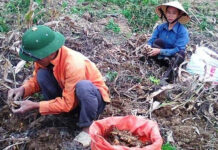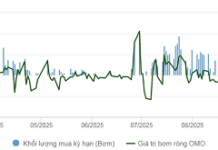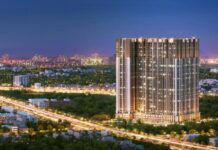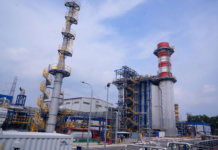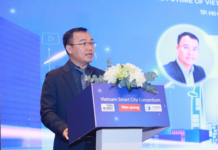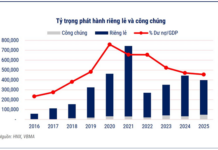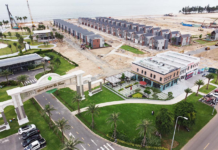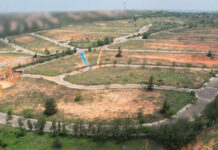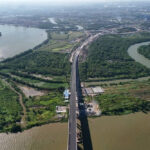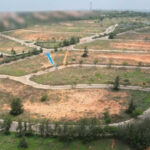Mr. Cao Tri Dung shared his insights on the pivotal role of tourism in Danang’s economic recovery and development. With its abundant natural resources and strategic location, Danang has experienced a tourism boom, becoming one of the most popular destinations in Vietnam.
According to Mr. Dung, three crucial factors contributed to Danang’s success: its diverse and appealing tourist attractions, supported by a strategic location that makes it a convenient flight destination for regional countries; well-developed infrastructure with a diverse range of high-class services; and a unique cultural identity coupled with the friendliness of its people.
He emphasized the bold thinking of local leaders over the years, which has transformed Danang into a destination capable of sustainable tourism development, leveraging its natural endowments and strategic investment in infrastructure. Additionally, attracting prominent investors who were able to reshape the city’s landscape and elevate the standard of services proved to be a pivotal move, resulting in a vibrant ecosystem of tourist offerings that rivaled, and often surpassed, those of other regional destinations.

Well-crafted tourism products have sustained Danang’s appeal. Photo: Hoang Phong
With Danang’s tourism sector flourishing and becoming a key driver of the local economy, what, in your opinion, has been its impact on the city’s socio-economic landscape?
Mr. Cao Tri Dung: Tourism is a multifaceted industry with far-reaching effects on numerous sectors. It has significantly contributed to Danang’s annual GRDP and provided stable and long-term employment opportunities for the local population. The people and business community of Danang have strongly supported tourism development over the years due to its positive spillover effects on various industries and the wider community.
This sector has proven its worth, especially in the face of economic shocks. While tourism may be the industry most vulnerable to such disruptions, the silver lining is that, as evidenced by Danang’s experience during the three years of the pandemic, it is also the sector that recovers the fastest and provides the most significant support to the city’s economy.
Other destinations, notably Thailand, have also recognized the pivotal role of tourism in economic recovery and are leveraging it to stimulate various business sectors. They understand that tourism can be a powerful catalyst for economic growth and social development.
As countries strive to revive their tourism industries after three years of pandemic-related disruptions, competition among destinations is intensifying. In your opinion, what should Danang do to sustain its competitiveness and avoid falling behind? Are there any specific strategies for long-term sustainable development?
Mr. Cao Tri Dung: Introducing new products and projects is essential, and Danang has excelled in this regard over the years. However, we must consider the overall market dynamics. For new markets, we can effectively utilize our existing offerings, while for repeat visitors, we must provide novel experiences. Innovation doesn’t necessarily mean creating something entirely new; it can also mean refreshing and enhancing what we already have. Successful examples of this approach include Ba Na Hills and Da Nang Downtown, which consistently offer exciting and groundbreaking experiences.

Danang International Fireworks Festival. Photo: Kim Lien
Leveraging its resources, infrastructure, and approved master plan, Danang must attract and collaborate with investors who possess the vision, scale, and determination to create outstanding and groundbreaking products and services. This approach aligns with the city’s vision for sustainable development.
Ba Na Hills Can Surpass Malaysia’s Genting
Danang has recently introduced new shows at Da Nang Downtown and Ba Na Hills, and there are plans to further elevate the latter to a new level of prestige. Do you envision Danang becoming home to world-class tourist attractions on par with global landmarks?
Mr. Cao Tri Dung: Indeed, this is a significant aspect of the city’s tourism development strategy, as outlined in the master plan. Danang aspires to establish Ba Na Hills as a world-class tourist destination, even surpassing Genting in Malaysia. Ba Na Hills enjoys a more convenient location, with easier access to the airport, and boasts more picturesque scenery. While it may not match Genting in terms of size, it certainly has the potential to offer a superior experience.
It is imperative for Danang to possess a destination of such caliber to serve as a flagship attraction. In recent years, the city’s allure has outpaced its capacity in terms of services and accommodations, resulting in a significant number of visitors being directed to Ba Na. A world-class tourist destination will act as a powerful magnet, drawing more visitors and creating a positive ripple effect throughout the city’s tourism industry.

Danang’s tourism is poised for a breakthrough. Photo: Ngoc Anh
Ba Na Hills has long been recognized as a key area for tourism development in Danang, even before the involvement of private investors. Along with Bach Ma, Tam Dao, and Dalat, it was one of the locations chosen by the French during their colonial rule for the development of hill stations and resorts.
When creating a world-class tourist destination, it is essential to prioritize sustainable development based on three pillars: economic sustainability, which entails attracting more visitors, generating employment, and increasing revenue for the government; cultural sustainability, which involves preserving and showcasing the unique cultural identity of the destination; and environmental sustainability, which focuses on maintaining ecological balance and harmony.
Ba Na Hills has excelled in these aspects, and we are confident that it will continue to flourish, solidifying its reputation and contributing significantly to Danang’s economy, society, and tourism industry.
In your opinion, what is the most effective way for a destination to attract large-scale projects while also ensuring sustainable development?
Mr. Cao Tri Dung: Sustainable development is a key tenet emphasized in the policies of the Party and the State, from the central to local levels, as well as in the National Tourism Development Strategy for the period up to 2030, with a vision towards 2045. Tourism projects should aim to showcase the beauty of nature, strike a balance with the natural environment, and ensure a fair distribution of benefits. This is a challenging equation to solve.
It is important to understand that natural resources, if left untouched or improperly managed, will remain mere resources. To transform them into appealing tourist attractions that enhance the destination’s brand, attract more visitors, and generate income for the local population, skillful exploitation and management are necessary.
Major investors bring with them a strong commitment to protecting their brand and reputation. As they operate a network of destinations, they cannot afford to tarnish their image. On the other hand, smaller investors may lack the resources to see a project through to completion, potentially abandoning it midway if it does not yield immediate success.
Therefore, we continue to advocate for prominent industry leaders with a long-term vision to undertake large-scale projects that elevate the destination’s brand, create economic and social value, and benefit the wider business community and local population. These are the fundamental elements that foster sustainable tourism development in any locality.
Thank you very much, Mr. Dung, for your valuable insights!




